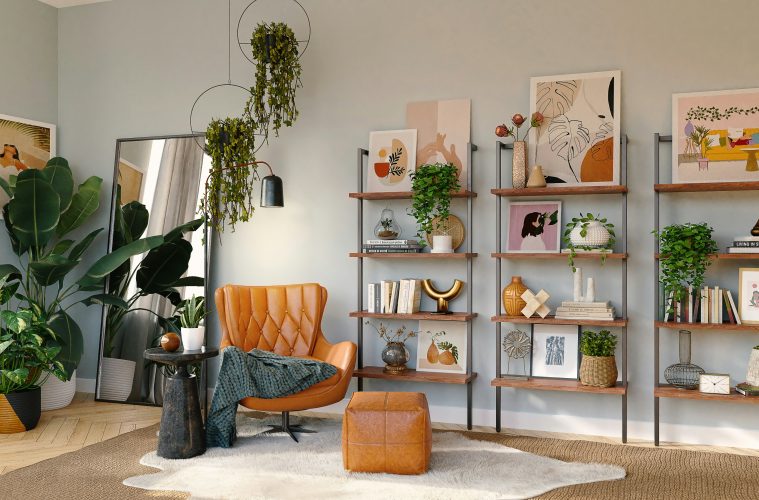As you look ahead, one of the most important decisions you’ll make is how to design your home for the next stage of your life. Whether you’re preparing to age in place, want to make your home more comfortable, or simply want a more functional space, your home plays a huge role in how you live as you grow older.
1. Plan for Accessibility
When it comes to aging in place, accessibility should be at the top of your list. As we get older, mobility can become more of an issue, so making sure your home is set up for that can really make a difference in your quality of life.
- Wider doorways and hallways: Check that doorways and hallways are wide enough to fit things like walkers or wheelchairs, especially in areas like the bathroom and kitchen.
- Grab bars and non-slip floors: Grab bars in the bathroom, near stairs, and in hallways are important for extra support, while non-slip floors can help prevent falls.
- Elevators or ramps for multi-story homes: If you have a multi-level home, adding an elevator or a ramp can make it easier to get around. These upgrades can also increase the resale value if you decide to sell later.
- Smart home technology: Smart home systems—like voice-activated lights and temperature controls—can make it easier to manage your home without moving around as much.
These changes don’t have to happen all at once. You can start with the most important areas and tackle them gradually, as your needs change over time.
2. Financing Home Modifications: Unlocking Your Home’s Potential
Upgrading your home to make it more accessible can be costly, but there are options available to help fund these changes. For those over 62, a reverse mortgage is one option to consider. It allows you to access some of your home’s equity, so you don’t have to worry about monthly payments. Instead, the loan is paid off when you sell your home or move out, making it a great solution for seniors who want to stay in their homes longer but need some extra funds to cover home upgrades.
If staying in your home is a priority, there are financing options available to help fund improvements like widening doorways or installing grab bars. Another option is a home equity loan or a home equity line of credit (HELOC), which both require monthly payments but could provide immediate cash to make the necessary changes to your home. Be sure to weigh all the pros and cons before deciding which option is best for you.
3. Update Your Kitchen and Bathroom for Safety and Comfort
The kitchen and bathroom are two spaces where safety and comfort should be a top priority. These are the areas where accidents are most likely to happen, but with some thoughtful updates, you can make them safer and more comfortable.
- In the kitchen: Lowering counters and sinks can make them easier to use. Touchscreen appliances or those with simple push-button controls can also make cooking and cleaning more manageable. Consider adding pull-out shelves and drawers to reduce the need to bend down or reach high shelves.
- In the bathroom: Non-slip flooring is essential in the bathroom, as is adding a shower with no step-up entry. Walk-in bathtubs are a great option for those who have difficulty stepping over the edge. Grab bars, shower chairs, and handheld showerheads will also improve safety and comfort.
Both the kitchen and bathroom are spaces where you spend a lot of time. Investing in these upgrades now will help you maintain your independence and make life a little easier as you age.
4. Incorporate Outdoor Spaces
The outdoors can be a peaceful retreat, and having a place where you can enjoy fresh air and sunshine is essential for well-being. Consider creating a low-maintenance garden or a small patio where you can relax and enjoy the outdoors.
- Accessible pathways: Make sure walkways are wide, smooth, and free of obstacles. This will make it easier for anyone, especially those using mobility aids, to navigate the outdoor areas.
- Raised garden beds: If you love gardening, raised beds will allow you to plant without having to bend over.
- Outdoor lighting: Lighting can help you navigate your outdoor space safely at night, especially if you like to spend time outside in the evening.
Designing an outdoor space that works for you can give you a space to unwind, enjoy nature, and add another layer of comfort to your home.
5. Budget for Future Modifications
While it’s important to plan for the immediate changes that will make your home more comfortable, it’s also essential to think about future modifications. As your needs evolve, your home will need to evolve with you. By setting aside funds for future changes, or using tools like a reverse mortgage, you can make sure your home stays ready for whatever comes next.
It’s a good idea to prioritize which modifications you’ll need sooner versus later so you can spread out the cost. That way, you won’t have to make all the changes at once, and you can manage your finances in a way that works for you.
Final Thoughts
Designing your home for the next chapter of your life is one of the best investments you can make. Whether you’re renovating your bathroom for better accessibility or creating a relaxing outdoor retreat, these changes will allow you to stay independent and live comfortably as you age.
Using financial tools can give you the extra funds you need to make those important modifications without having to sell your home or take on new monthly debt. With a little planning and foresight, you can ensure your home remains the perfect place for you to enjoy the years ahead.
Published by HOLR Magazine.


